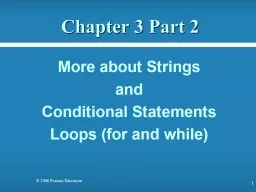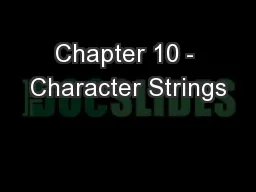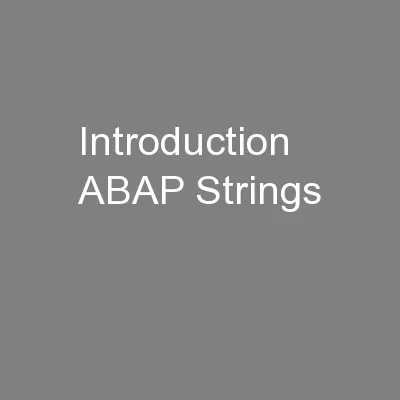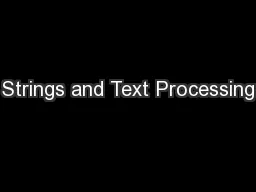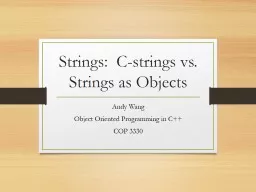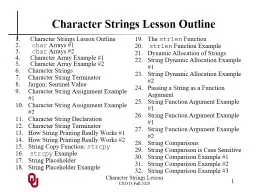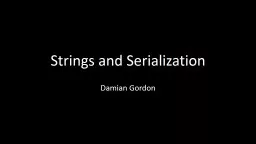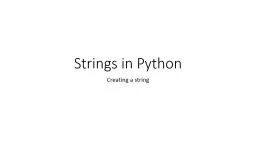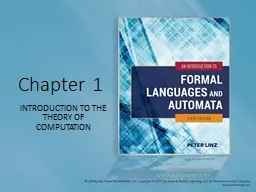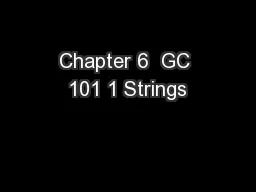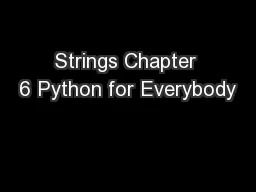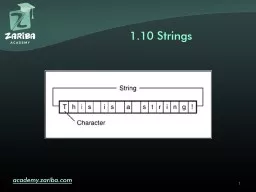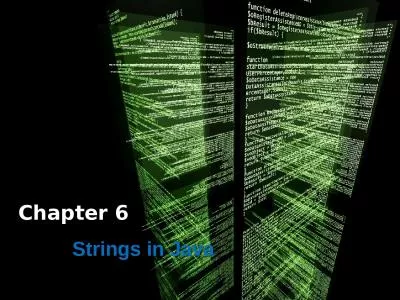PPT-Chapter 3 Part 2 More about Strings
Author : kittie-lecroy | Published Date : 2018-10-22
and Conditional Statements Loops for and while 1 2 Repetition Statements Repetition statements allow us to execute a statement multiple times Often they are referred
Presentation Embed Code
Download Presentation
Download Presentation The PPT/PDF document "Chapter 3 Part 2 More about Strings" is the property of its rightful owner. Permission is granted to download and print the materials on this website for personal, non-commercial use only, and to display it on your personal computer provided you do not modify the materials and that you retain all copyright notices contained in the materials. By downloading content from our website, you accept the terms of this agreement.
Chapter 3 Part 2 More about Strings: Transcript
Download Rules Of Document
"Chapter 3 Part 2 More about Strings"The content belongs to its owner. You may download and print it for personal use, without modification, and keep all copyright notices. By downloading, you agree to these terms.
Related Documents

